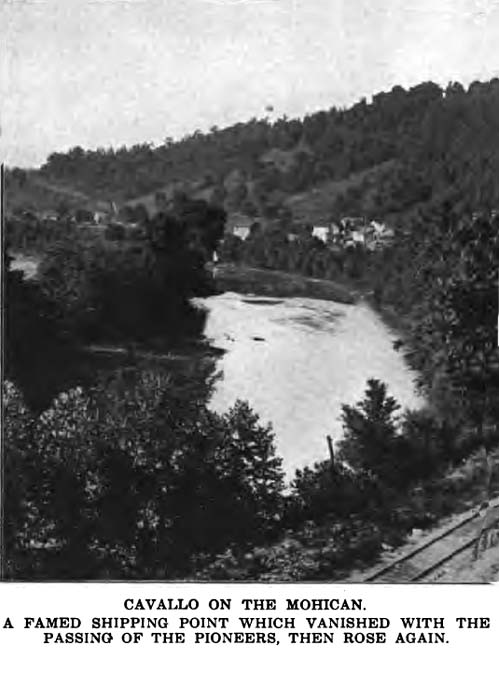|
CHAPTER II.
NEW DISCOVERIES TOUCHING THE MOUNDBUILDERS, THE VANISHED
RACE VIEW, THE INDIAN THEORY, THE INCA, TOLTEC, ASIATIC,
EGYPTIAN, IRISH WELSH AND "LOST TRIBE" SPECULATIONS.
Like a God-created, fire-breathing spirit
host, we emerge from the inane, haste stormfully across the
astonished earth, then plunge again into the inane. On
the hardest adamant some footprint of us is stamped in; the
last rear of the host will read traces of the earliest van.
But whence? O heaven, whither? Sense knows not
faith knows not, only that it is through mystery to mystery,
from God to God.
- Carlyle's "sartor Resartus."

All
the wisdom of the Orient, of Egypt, of Greece and Rome tells
us naught of our land or its people in those dim and shadowy
ages when the Chinese, Chaldeans, Egyptians and Persians
comprised the known population of the world. The
secret of those thousands of years is locked in the breast
of Nature. Forest after forest has come and gone,
rivers have left their ancient shores, plains have come and
bottom lands. Against the blue dusk of summer skies
and the gray cold of winter clouds, the eyes of Unknown Man
lifted to the same old rolling line of hills, those heights
eternal, dumb watches of fathomless time looking down on
human ages in stormful passage to oblivion.
The vast rivers of melting ice spreading from hillside
to hillside in glacial man's day slowly receded in course of
ages to their present beds, leaving exposed broad plains and
valleys for the use of that Other Man who has baffled our
understanding. In his earthworks and stoneworks lies
hidden the mystery of ages. What story of human
activity, of weird ceremonies, perhaps sacrificial terrors,
may belong to these mute symbols of a voiceless past.
Weed-grown and brush-covered, some today are but faintly
traced in brier-tangled field and wood, while the plow has
worn down others until there is left only a dim outline
where not many years ago there circled in bold relief a
breast-high wall of earth.
From the variety and extent of these earthworks within
our county's borders, ranging from circles and huge
enclosures to mounds large and small, and from the vast
labor necessarily involved, whether
[Page 14]
the earth was carried in baskets or otherwise, we have
sufficient evidence that this was a populous center of that
ancient race engaging the attention of the archaeological
world. Whether or not it was a mighty power that held
sway in the primeval forest, a people skilled in arts of
peace as well as war, we can only conjecture from the
inscrutable character of the ruins that mark the passing of
this lost race.
For most of us the vanished race view is till the more
plausible despite the weight of testimony addduced by
archaeological authority in support of the Indian theory of
our Moundbuilders' origin. All local knowledge which
as come down to us regarding the red men who existed here
absolves them readily from the suspicion of undertaking
anything so nearly approaching real work as the building of
these mounds. Whatever else may be charged to our
noble red men during their residence in this region, we
hesitate about accusing them of overcoming their haughty
disdain for labor to the extent of digging up tons and tons
of earth and heaping it into walls and mounds. The
Coshocton Indian's popular idea of a wall was a tepee skin
or bark of a tree, and for a fortification it was far less
troublesome and vastly more to his liking to simply dodge
behind a rock.
Of course, any discussion of hte Moundbuilders problem
is expected to be characterized by reserve. We can
only approach the subject by cautiously venturing to inquire
without presuming to decide, especially where eminent
authorities in the scientific world have so hopelessly
disagreed. There are those, we are told, who have written
much but added little to real knowledge of the subject; more
who have only borrowed from others; some who have made sober
observations; some far from sober; and some who have
compiled descriptions with worthless comment.
In this region, doubly important among American
localities as a prehistoric and historic center, the student
has the advantage of personal contact with such evidence as
remains. To that extent at least what views are formed
may deal with facts, not surmise.
Special attention is drawn to the extensive earthwork
on a precipitous ridge of the Winfield Miller estate
along the Walhonding near Coshocton. A circle swings
around the whole summit of the hill. Through the
fringe of woods the view seeps the valley of the Walhonding.
Down the steep hillside is a drop of two hundred feet
[Page 15]
to the road. There are only a few of these high
hilltop enclosures reported in Ohio.
W. K. Moorehead, curator of the Ohio State
Archaeological and Historical Society, reporting a visit to
the circle on this hill a dozen
[Page 16]
[Page 17]
[Page 18]
[Page 19]
[Page 20]
[Page 21]

[Page 22]
[Page 23]
[Page 24]
[Page 25]
[Page 26]
[Page 27]
they at least understood some sort of mechanical process,
giving a revolving motion to their clay. Their
implements and ornaments disclose their art in stone, and by
the same token illustrate their migrations and intertribal
traffic.
Theirs was a life of peace and war until the climax was
reached and the tragedy culminated in devastation and ruin.
After that, an appalling stillness with the fall of the
curtain, to rise again on this stage where the tragedies of
the red man awakened the forest echoes once more with
terrifying voice.
<
CLICK HERE
to RETURN to TABLE of CONTENTS >
|